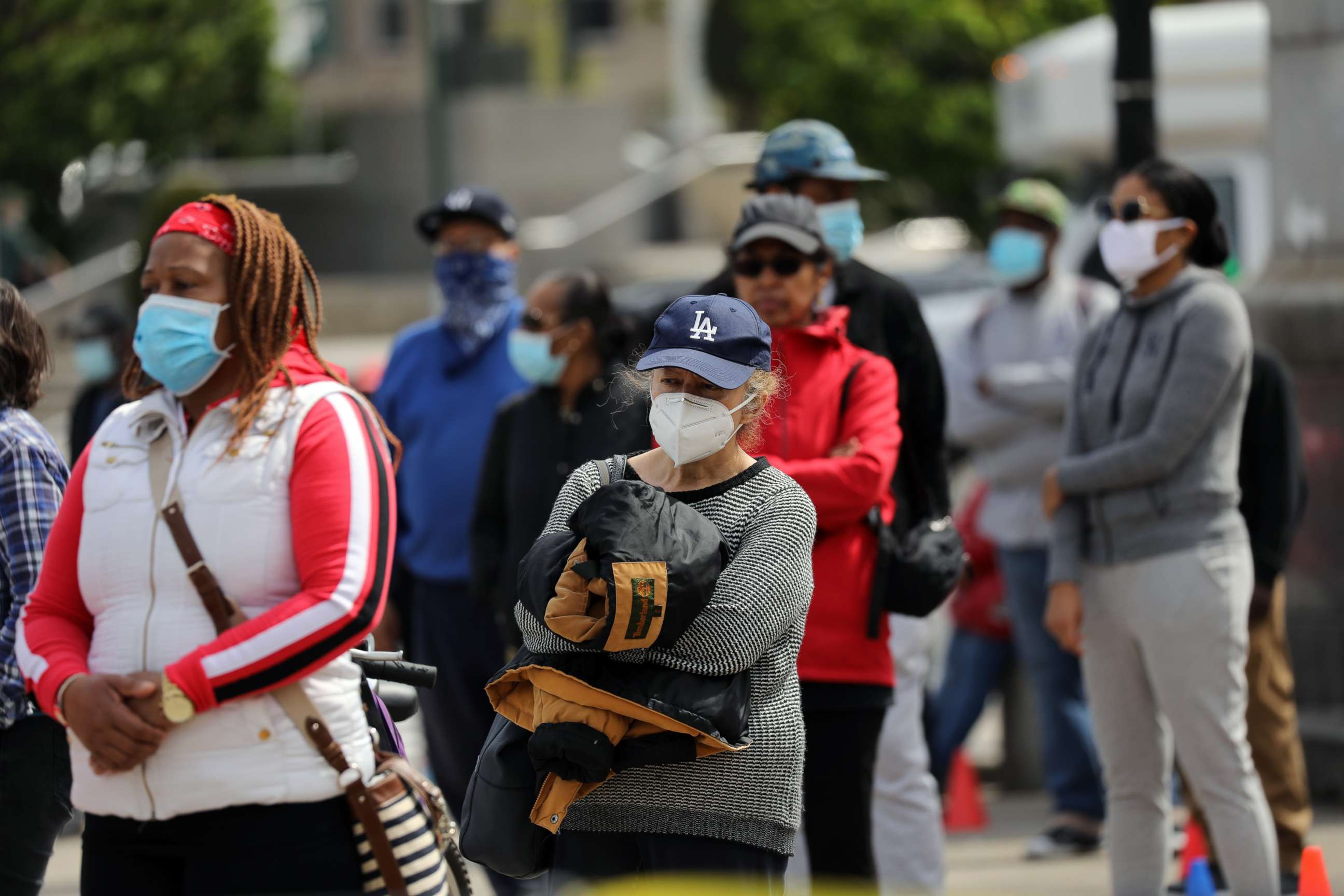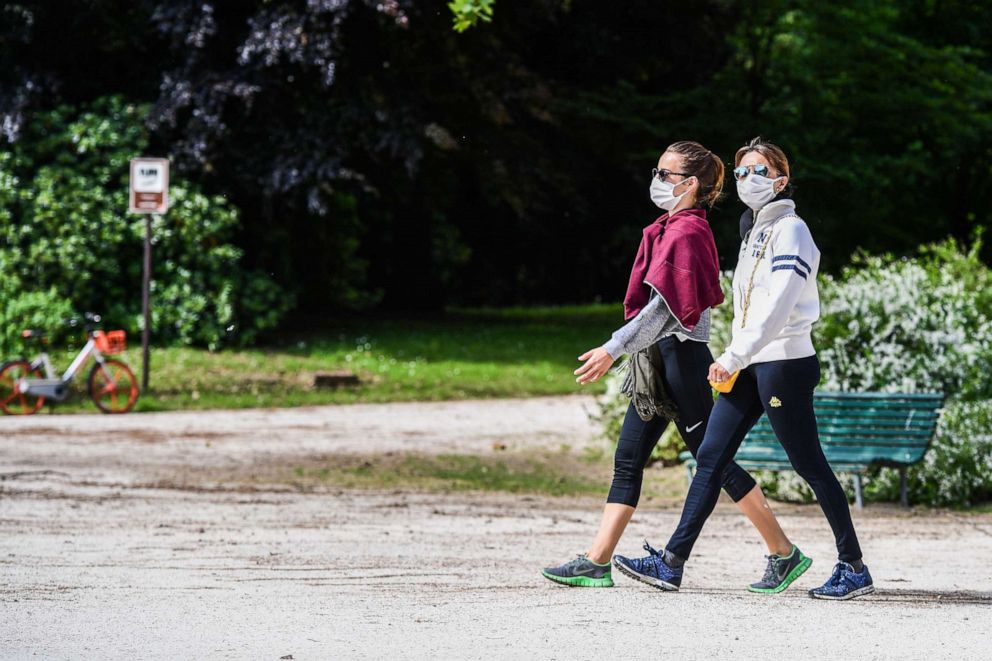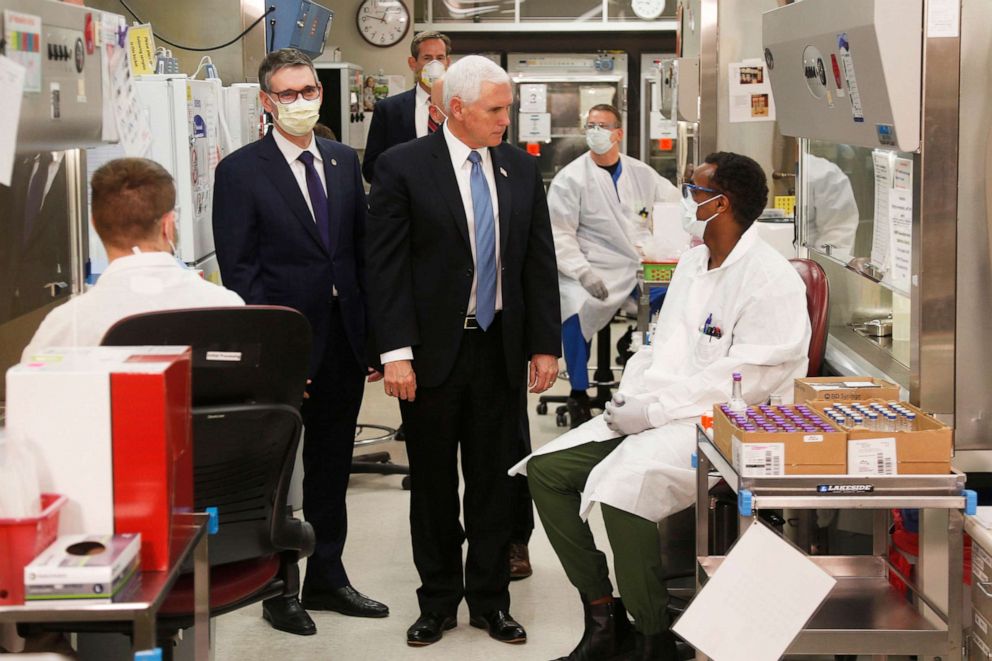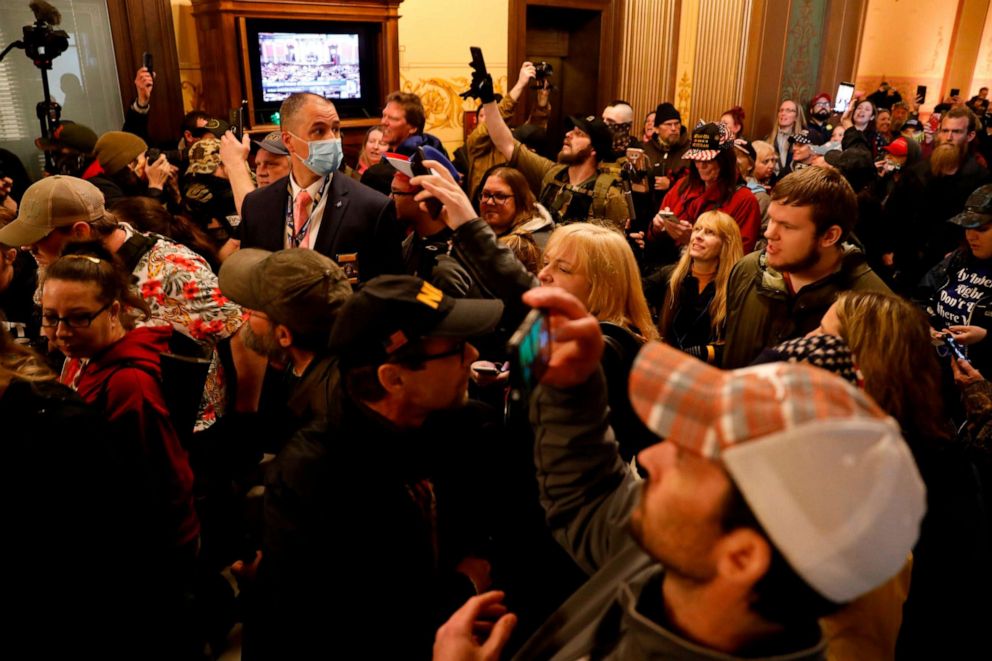Mixed messages on masks from leaders during pandemic has caused confusion for many
Guidance from national and local leaders has varied significantly.
Public health experts agree that the continued wearing of masks and other face coverings in public will be a critical tool in slowing the spread of the novel coronavirus as many states begin to reopen their economies. But mixed messages from national and local leaders appears to have slowed their widespread adoption.
The Centers for Disease Control recommends “the use of simple cloth face coverings to slow the spread of the virus and help people who may have the virus and do not know it from transmitting it to others.” Dr. Anthony Fauci, the nation’s top infectious disease expert and a member of the White House coronavirus task force, told the New York Times last week that the most important thing Americans can do moving forward is “try and keep the six-foot distance and wear face coverings.”
The good news? There is compelling evidence that they work. A recent study in China found that in an area of Hong Kong with 96.6% mask compliance, COVID-19 incidence was significantly lower than eight major countries with well-established health care systems where face mask usage was not universally adopted.
The bad news? Many people aren’t wearing them. According to an ABC News/Ipsos poll released last week, only 55% of Americans who left their homes in the last week said they wore a face mask or face covering, while 45% said they did not.

John Brownstein, an epidemiologist at Boston Children's Hospital and an ABC News contributor, said there was "definitely confusion" over face coverings early on, though it was "partly due to improved understanding of virus transmission over time." As the science surrounding how the virus was transmitted evolved, so did the guidance.
But while most states now recommend that citizens wear masks in public, only seven states require by law that faces be covered, and only a handful of them actually enforce the measure by issuing fines for uncovered faces. So in most of the country, that leaves the decision on whether to wear a mask to the individual.
On a call with governors Monday hosted by Vice President Mike Pence, Dr. David Rubin, the co-director of the PolicyLab at Children’s Hospital of Philadelphia, presented findings on how to reopen states in different positions across the country, highlighting the need to consistent messaging on universal masking.
“Regardless of the location though, cautiousness and patience and individual behavior, and how people are using masks and hygiene are going to be required to prevent losing control of the epidemic,” Dr. Rubin said, according to audio of the phone call obtained by ABC News. “You’re going to need consistent recommendations … to prevent a resurgence of diseases as we get to the fall. So what does this look like? Treat those local areas differently as you reopen, you know, but focus on those universal masking recommendations, on high exposure workers.”

Even top disease experts were slow to get on the same page. The World Health Organization and CDC initially decreed masks were needed only for those who were sick or caring for those who were sick. Surgeon General Jerome Adams even tweeted in February that Americans should stop buying them.
“Seriously people- STOP BUYING MASKS!,” he wrote. “They are NOT effective in preventing general public from catching #Coronavirus, but if healthcare providers can't get them to care for sick patients, it puts them and our communities at risk!”
But even after that guidance changed, some leaders were slow to adapt.
Last month, President Donald Trump said he would not wear a mask in public while announcing the CDC guidelines recommending them, emphasizing that it was “voluntary” and “you do not have to do it." When he toured the Honeywell N95 mask production facility in Phoenix, Arizona on Tuesday, his face was uncovered.
Last week, Vice President Pence visited the Mayo Clinic in Rochester, Minnesota without a mask, and then later conceded that he actually should have worn one.
"I didn't think it was necessary,” Pence said during a Fox News town hall on Sunday, “but I should have worn a mask at the Mayo Clinic, and I wore it when I visited the ventilator plant in Indiana.”

Guidance from governors has varied state by state.
New York Governor Andrew Cuomo has mandated that New Yorkers must wear face coverings when social distancing is not possible and slammed those who refuse to comply.
“You could literally kill someone because you didn’t want to wear a mask,” Cuomo said during a press conference on Monday. “I mean how cruel and irresponsible would that be?”
New Jersey Gov. Phil Murphy signed executive orders requiring all staff and customers of essential businesses to wear masks and has urged the public to do so as well, though he was initially hesitant to do so because the state lacked enough for everyone.
“We’re not remotely close to being able to mask everybody,” Murphy said during a press conference in early April. “I don’t want to overstate this – again, we’re short ventilators, we’re short PPE, we’re short beds, we’re short workers. If we flipped the switch and said, ‘General public, you need to wear masks,’ we don’t have the masks. And that’s a federal reality.”
And Ohio Gov. Mike DeWine said on ABC's “This Week" on Sunday that his statewide order mandating face masks be worn in stores went "too far" and reversed the decision.
"It became clear to me that that was just a bridge too far,” DeWine said. “People were not going to accept the government telling them what to do.”

Some Americans appear to have ignored the guidance. Officials in Miami, Florida were forced to close a park on Monday after law enforcement issued over 7,000 warnings to those who failed to wear face coverings over the weekend.
Others have been more extreme in their resistance. After some businesses in Stillwater, Oklahoma, began reopening on Friday with a requirement that customers wear masks, Stillwater City Manager Norman McNickle said in a statement that some employees were “threatened with physical violence” by people who “cite the mistaken belief the requirement is unconstitutional.”
But Dr. Simone Wildes, an Infectious Diseases Physician at South Shore Health and an ABC News medical contributor, said that wearing masks are not only a “quick solution” but an easy one.
“[It can be] easily implemented,” she said, “with little to no negative health impact on the public domain.”
What to know about coronavirus:
- How it started and how to protect yourself: coronavirus explained
- What to do if you have symptoms: coronavirus symptoms
- Tracking the spread in the US and Worldwide: coronavirus map
Tune into ABC at 1 p.m. ET and ABC News Live at 4 p.m. ET every weekday for special coverage of the novel coronavirus with the full ABC News team, including the latest news, context and analysis.




